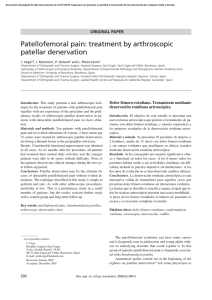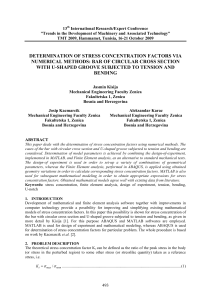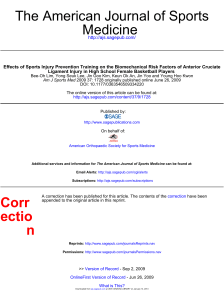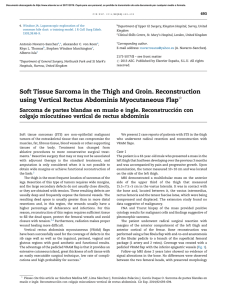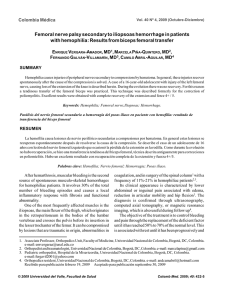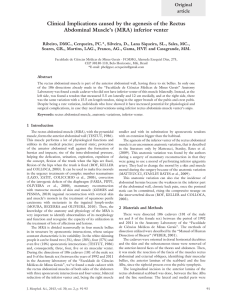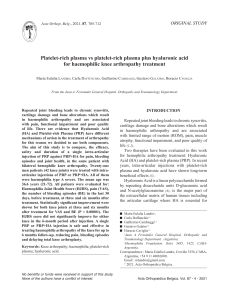The use of Kinesio® Tape in patients diagnosed with Patellofemoral
Anuncio
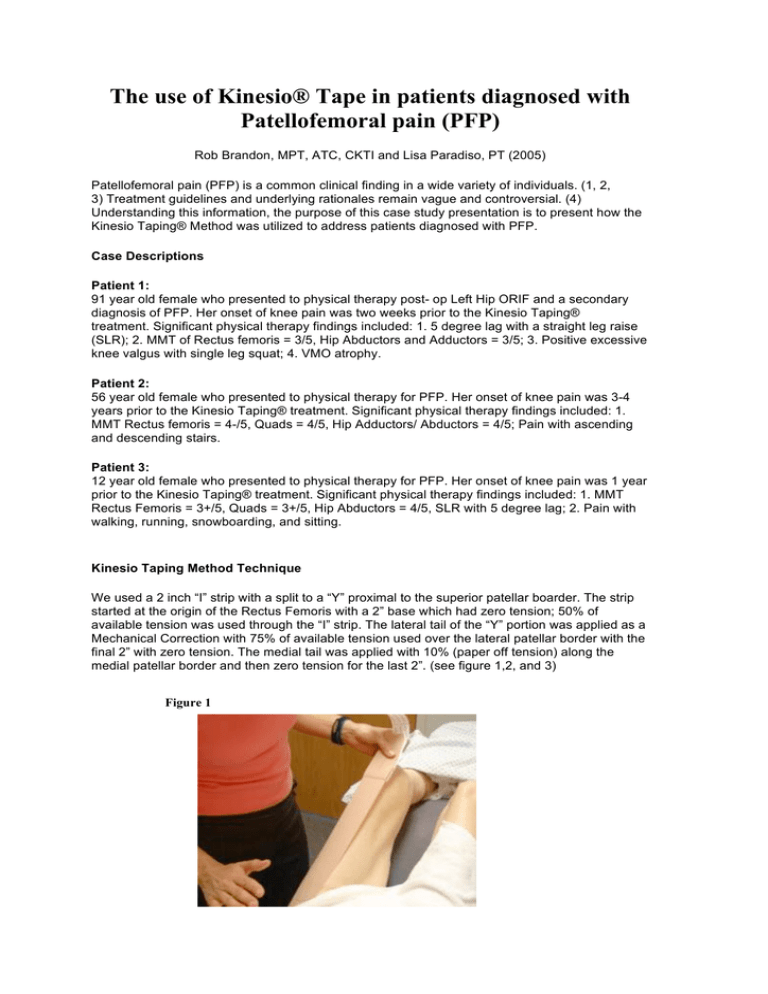
The use of Kinesio® Tape in patients diagnosed with Patellofemoral pain (PFP) Rob Brandon, MPT, ATC, CKTI and Lisa Paradiso, PT (2005) Patellofemoral pain (PFP) is a common clinical finding in a wide variety of individuals. (1, 2, 3) Treatment guidelines and underlying rationales remain vague and controversial. (4) Understanding this information, the purpose of this case study presentation is to present how the Kinesio Taping® Method was utilized to address patients diagnosed with PFP. Case Descriptions Patient 1: 91 year old female who presented to physical therapy post- op Left Hip ORIF and a secondary diagnosis of PFP. Her onset of knee pain was two weeks prior to the Kinesio Taping® treatment. Significant physical therapy findings included: 1. 5 degree lag with a straight leg raise (SLR); 2. MMT of Rectus femoris = 3/5, Hip Abductors and Adductors = 3/5; 3. Positive excessive knee valgus with single leg squat; 4. VMO atrophy. Patient 2: 56 year old female who presented to physical therapy for PFP. Her onset of knee pain was 3-4 years prior to the Kinesio Taping® treatment. Significant physical therapy findings included: 1. MMT Rectus femoris = 4-/5, Quads = 4/5, Hip Adductors/ Abductors = 4/5; Pain with ascending and descending stairs. Patient 3: 12 year old female who presented to physical therapy for PFP. Her onset of knee pain was 1 year prior to the Kinesio Taping® treatment. Significant physical therapy findings included: 1. MMT Rectus Femoris = 3+/5, Quads = 3+/5, Hip Abductors = 4/5, SLR with 5 degree lag; 2. Pain with walking, running, snowboarding, and sitting. Kinesio Taping Method Technique We used a 2 inch “I” strip with a split to a “Y” proximal to the superior patellar boarder. The strip started at the origin of the Rectus Femoris with a 2” base which had zero tension; 50% of available tension was used through the “I” strip. The lateral tail of the “Y” portion was applied as a Mechanical Correction with 75% of available tension used over the lateral patellar border with the final 2” with zero tension. The medial tail was applied with 10% (paper off tension) along the medial patellar border and then zero tension for the last 2”. (see figure 1,2, and 3) Figure 1 Figure 2 Figure 3 Outcomes Patient 1 = no pain with gait; no night pain, knee pain was immediately resolved following the application. Patient 2 = no pain with normal walking, no pain with ascend or descend stairs, patient reported less pain at the end of her day. Patient 3 = no pain with running or during ADL’s Conclusion This case study simply demonstrates that the Kinesio Taping® Method has been used in cases of patellofemoral pain with positive effects on pain and function. Clearly, further research is necessary to show the benefits of the Kinesio Taping® Method. References Brick GW, Scott RD. The patellofemoral component of total knee arthroplasty. Clin Orthop. 1988; 163-178. Grady EP, Carpenter MT, Koenig CD, Older SA, Batafarano DF. Rheumatic findings in Gulf War veterans. Arch Intern Med. 1998; 158: 367-371. Samilson RL, Gill KW. Patello-femoral problems in cerebral palsy. Acta Orthop Belg. 1984; 50:191-197. Powers CM. Rehabilitation of patellofemoral joint disorders: a critical review. J Orthop Sports Phys Ther. 1998; 28: 345-354.


